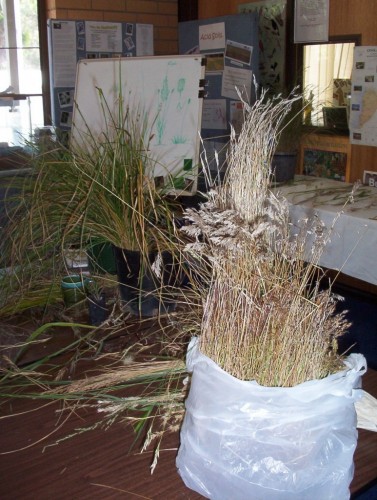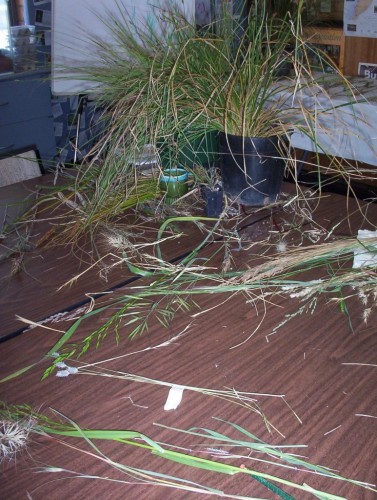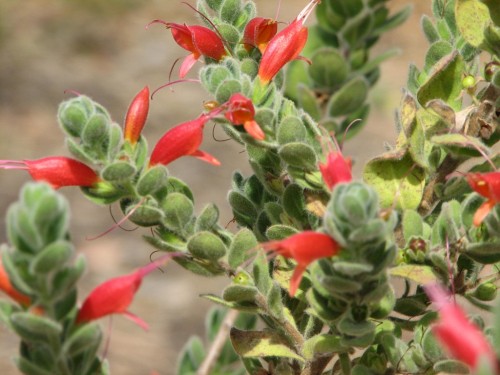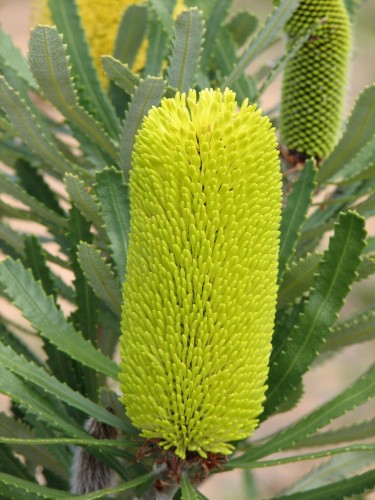New Grasses Book for South Australia
I still haven’t had a good look at it, or tried using the key for identification. That is something I want to try this week before all the Austrostipa (Spear Grass) seed drops. I hope I can get closer to an identification before I have to measure hairs on seed that might only be .3mm long!
The book contains the information from the 1986 Flora of South Australia by Jessop and Toelken, with corrections and updated information, including 61 extra species. Certainly a great resource for those interested in growing native grasses.
Grass Identification
I have been able to go to two sessions on grass identification at Mt Pleasant in the northern Mt Lofty Ranges. These were aimed at beginners and were as basic as deciding whether a plant was a grass or not, parts of grasses so that we could understand what is talked about in the Flora guides and deciding such seemingly simple things like the difference between a panicle and a raceme. It took me ages to ‘get it’.
Fortunately our tutors were able to speak layman’s language and make it all understandable and take us to the next stage of using the botanical terminology. In a few weeks we will have a field trip to help us recognise the plants rather than the pieces we were using indoors.
I always fear finding myself propagating introduced species of grasses. I am on a quest for a suitable grass to use as a lawn substitute that will not require excessive water to look good. I heard ‘lawn’ mentioned in one of the conversations, sat up to take notice of what was being said, only to have the other tutor say ‘oh, but…’ and sure enough what was being said applied to a higher rainfall area. Even though we are only 40 minutes drive away, we are in a definite rain shadow here.
Planting More Eremophilas (Emu Bushes)
More plants found a spot in the ground today. Eremophilas seem to be the best option at the moment. Those I planted were Eremophila splendens, Eremophila ionantha, a very prostrate form of Eremophila glabra with deep red flowers, Eremophila debilis, a yellow form of Eremophila hillii, Eremophila glabra ssp. carnosa, Eremophila denticulata, Eremophila polyclada and Eremophila calorhabdos.
I was very aware of how ‘non wetting’ are some of the spots in the front yard. I’ve been told that potting mixes which have been wet very well will, on drying out, become water repellant. I am sure that must also happen to soil. So the next job needs to be treating the ground with a soil wetting agent and doing the same to the potted plants. With water at a premium this year, every drop needs to be accounted for.
More Information On Growing Eremophilas
Planting Banksias
Todays’s jobs have been outside and included planting out a box of 24 Banksia plants in the front entrance area of our place. The spot was chosen for several reasons. Firstly these are spectacular plants when in flower so I wanted them to be where we could see them from the house. People driving or walking past would also get pleasure from the sight of the flowers. The area is well drained, deep, sandy loam, although inclined to be water repellant. Some of the plants will be quite large and will form a screen and windbreak which I want in that location.
Species planted were Banksia caleyi, praemorsa, marginata, sphaerocarpa, ashbyi, dryandroides, lemanniana, oblongifolia, repens, hookerana, candolleana. How successful they are remains to seen. The high pH of the soil may be a problem. I want to grow them without any external interference, other than water, if I can. I soaked the plants in a bucket of water containing a soil wettting agent. Tomorrow I will add some granular soil wetter to the planting spot just under where the dripper water will hit the ground.
More information on Growing Banksias
Mallee Scrub
‘The Mallee’ is a term covering several scenarios. The Mallee is a term used to describe areas of the country which are covered in mainly Eucalypts of the mallee type. A feature, and this is what I love, is the variety of smaller plants forming the understory. These plants are often prolific and very colourful flowering plants.
We talk about Mallee towns being those towns, usually in farming communities, which exist because of the mallee areas being cleared for farming.
The photos show parts of Lowan Conservation Park including the access track through the park.





